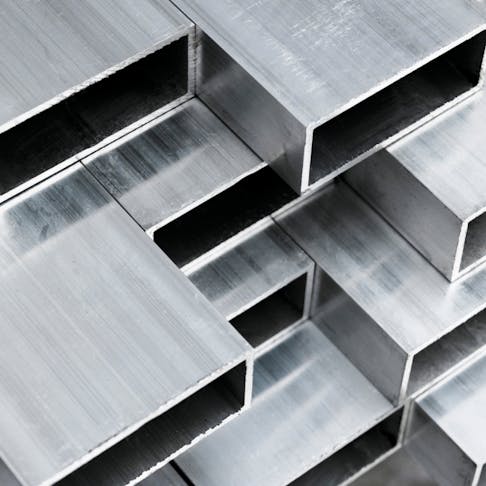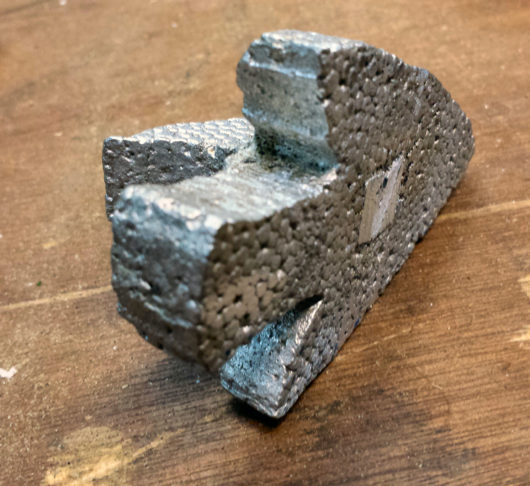Expert insights from leading Aluminum Casting Company specialists
Wiki Article
Everything About Aluminum Casting: Discovering Its Benefits and Applications in Modern Manufacturing
aluminum casting plays a crucial duty in modern production. It offers a series of advantages, such as lightweight residential properties and excellent rust resistance. Industries from aerospace to consumer electronic devices depend on aluminum casting for its adaptability. As automation and sustainability gain traction, the process is evolving. Recognizing the intricacies of aluminum casting discloses its relevance and possibility. What innovations and fads are forming its future?The Aluminum Casting Process: A Summary
The aluminum casting process changes raw aluminum right into accurate components through a series of methodical actions. Initially, aluminum is thawed in a furnace, getting to temperature levels in between 660 ° C and 750 ° C. As soon as molten, the liquid aluminum is poured into mold and mildews made to shape the last product. 3 common casting approaches are sand casting, die casting, and investment casting, each offering one-of-a-kind benefits tailored to details applications.After the aluminum strengthens and cools down, the molds are gotten rid of, revealing the actors element. Ultimately, any type of excess product, called flash, is trimmed away. Second procedures, such as machining or surface ending up, may be carried out to attain desired measurements and surface quality - Precision aluminum casting. Quality assurance inspections verify that the parts meet specific requirements. This elaborate process allows producers to create lightweight, intricate forms that offer diverse industries, from automobile to aerospace
Benefits of Aluminum Casting
While different steel casting procedures exist, aluminum casting sticks out as a result of its various advantages. One substantial advantage is its lightweight nature, which adds to decreased power usage in transportation and manufacturing. In addition, aluminum displays superb rust resistance, ensuring longevity and resilience in different settings. The thermal and electric conductivity of aluminum likewise makes it an excellent choice for applications requiring reliable heat dissipation and electrical conductivity.Furthermore, aluminum casting enables complex geometries and intricate layouts, enabling suppliers to develop detailed components with precision. The procedure normally causes a smooth surface area coating, lowering the demand for substantial post-processing. In addition, aluminum is highly recyclable, promoting sustainability in producing methods. Its ability to be cast in various types, such as sand, pass away, or financial investment casting, uses adaptability in production approaches. On the whole, these advantages make aluminum casting a favored selection in contemporary manufacturing across numerous markets.
Applications of Aluminum Casting in Numerous Industries
aluminum casting plays a vital function in numerous vital markets, including aerospace, vehicle, and customer electronic devices. Its light-weight and resilient residential properties make it an optimal option for producing elements such as airplane parts, auto housings, and digital units. As markets proceed to focus on performance and performance, the applications of aluminum casting are most likely to broaden additionally.Aerospace Element Manufacturing
As the aerospace sector increasingly demands light-weight yet durable materials, aluminum casting has arised as a pivotal remedy for producing crucial components. The process allows for the creation of complex geometries that are vital in aircraft layout, such as engine installs, structural frameworks, and different fittings. aluminum's superb strength-to-weight ratio adds to sustain efficiency and general performance, making it a preferred option for aerospace applications. Additionally, aluminum castings use outstanding deterioration resistance, an essential aspect in the rough environments experienced during trip. The accuracy of aluminum casting methods makes it possible for makers to generate components that meet rigid aerospace requirements, ensuring dependability and safety. This versatility and efficiency make aluminum casting an invaluable property in the progressing landscape of aerospace element production.Automotive Components Production
Changing the automobile industry, aluminum casting plays a crucial role in the manufacturing of light-weight yet robust components. This process allows producers to produce elaborate designs and shapes that boost car efficiency and efficiency - aluminum casting. Trick automobile parts produced through aluminum casting include engine blocks, transmission housings, and suspension parts. The light-weight nature of aluminum adds to enhanced fuel effectiveness and decreased discharges, lining up with contemporary environmental requirements. In addition, aluminum's exceptional deterioration resistance expands the lifespan of auto parts, further improving integrity. The versatility of aluminum casting makes it possible for auto engineers to innovate, incorporating sophisticated technologies and maximizing designs. As electric lorries gain traction, the need for aluminum parts is anticipated to increase, strengthening its significance in future automotive manufacturingwebsite link
Consumer Electronic Devices Housing

Comparison With Other Casting Products
When evaluating casting products, aluminum attracts attention due to its special mix of buildings that usually surpass those of alternatives like steel, iron, and plastic. Its lightweight nature is a considerable advantage, making it ideal for applications where decreased weight is necessary, such as in aerospace and auto industries. In comparison, iron and steel, while using superior strength, are significantly larger, which can hinder performance and boost gas usage.
Developments in Aluminum Casting Modern Technology
As innovations in modern technology proceed to reshape manufacturing procedures, advancements in aluminum casting are emerging to enhance accuracy, sustainability, and effectiveness. One significant advancement is the fostering of innovative simulation software application, which permits manufacturers to anticipate casting end results and enhance styles before manufacturing begins. This decreases product waste and assurances better parts.In addition, the application of automated systems in the casting process has actually considerably improved production rate and consistency. Robotic arms and automated pouring systems minimize human mistake and enhance security in the workplace.
3D printing technology is likewise making waves in aluminum casting by allowing the fast prototyping of mold and mildews, permitting for even more complex styles and faster turn-around times.
The expedition of eco-friendly alloys and reusing techniques adds to minimizing the environmental impact of aluminum casting procedures. Jointly, these advancements are solidifying aluminum casting's duty in modern-day manufacturing.
Future Patterns in Aluminum Casting
The future of aluminum casting is increasingly shaped by sophisticated automation modern technologies that improve manufacturing effectiveness and accuracy. Additionally, lasting manufacturing techniques are obtaining grip, as markets seek to reduce their environmental influence while maintaining top quality. These fads signify a change in the direction of even more ingenious and responsible methods in the aluminum casting market.Advanced Automation Technologies
The aluminum casting market has actually long counted on traditional methods, advanced automation modern technologies are poised to revolutionize manufacturing procedures. Robotics and fabricated intelligence are significantly being integrated right into casting procedures, boosting accuracy and efficiency. Automated systems simplify product handling, mold prep work, and high quality examination, reducing human error and cycle times. Additionally, predictive upkeep powered by IoT modern technology makes it possible for manufacturers to expect tools failures, minimizing downtime. These advancements also help with real-time information analysis, enabling instant adjustments to maximize manufacturing. As industries demand higher-quality items at faster rates, the adoption of advanced automation innovations in aluminum casting is expected to expand, driving competitiveness and innovation in the field. This pattern notes a substantial shift in the direction of smarter, more efficient manufacturing techniques.Lasting Production Practices
Advanced automation modern technologies not just improve effectiveness yet also lead the way for sustainable production methods in the aluminum casting industry. These technologies promote the decrease of waste and power usage by optimizing procedures and decreasing problems. Closed-loop recycling systems have emerged, making it possible for manufacturers to recycle scrap aluminum, thus reducing the requirement for virgin products and decreasing carbon footprints. Additionally, innovations in additive manufacturing enable for even more accurate designs, decreasing excess product usage. Furthermore, the integration of renewable resource sources in production centers sustains environmentally friendly procedures. As industry standards evolve, firms embracing sustainable methods not just boost their environmental influence but likewise gain a competitive side in the marketplace, aligning with consumer demands for greener items.Often Asked Inquiries
Exactly How Is Aluminum Casting Eco-friendly Compared to Various Other Procedures?
aluminum casting is eco-friendly due to its recyclability, lower energy intake, and decreased emissions compared to various other processes. It minimizes waste and uses recycled materials, adding to a sustainable production approach while maintaining natural deposits.What Safety And Security Preventative Measures Are Essential Throughout Aluminum Casting?

Can Aluminum Casting Be Recycled After Usage?
Yes, aluminum casting can be recycled after use. The reusing process go to these guys entails melting down the aluminum and getting rid of pollutants, enabling it to be repurposed for brand-new spreadings, making it an ecologically pleasant alternative in manufacturing.Just How Does Aluminum Casting Effect Manufacturing Costs?
aluminum casting can substantially affect manufacturing expenses by lowering material waste and improving manufacturing procedures. Its light-weight nature additionally reduces transport expenses, ultimately enhancing price performance in various markets reliant on long lasting, premium elements.
What Kinds of Finishes Are Offered for Aluminum Cast Products?
aluminum cast items can be completed using various strategies, consisting of anodizing, powder finishing, paint, and sprucing up. Each coating improves appearance, rust resistance, and resilience, enabling modification to fulfill certain visual and practical demands.The aluminum casting process changes raw aluminum right into precise parts through a series of methodical steps. While different steel casting processes exist, aluminum casting stands out due to its numerous advantages. While the automobile sector benefits considerably from aluminum casting, customer electronic devices likewise leverage this production process for real estate components. Advanced automation modern technologies not just boost effectiveness but likewise lead the way for lasting production methods in the aluminum casting industry. aluminum casting can significantly influence manufacturing costs by lowering material waste and enhancing production processes.
Report this wiki page